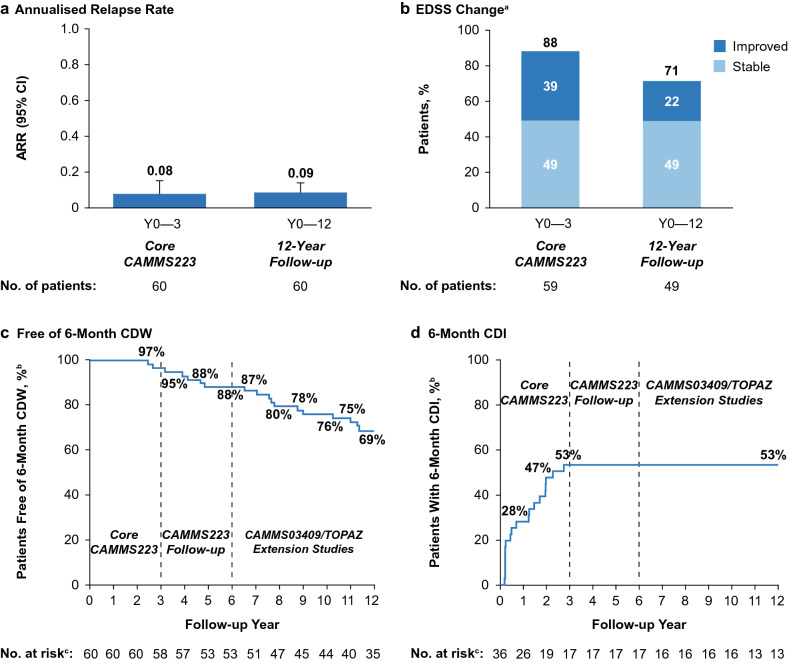Fig. 2.
Clinical efficacy outcomes of the CAMMS223 long-term follow-up cohort over 12 years. ARR (a), proportions of patients with stable or improved EDSS scores (b), proportions of patients free of 6-month CDW (c), and proportions of patients achieving 6-month CDI (d) over 12 years in the long-term follow-up cohort. Error bars denote 95% CIs. aProportions of patients with stable (≤ 0.5-point change in either direction), or improved (≥ 1.0-point decrease) EDSS scores, assessed since core CAMMS223 study baseline. bKaplan–Meier estimates. cNumber at risk is the number of patients who remained on study and had yet to experience 6-month CDW or 6-month CDI. CDI is defined as ≥ 1-point EDSS decrease from baseline confirmed over 6 months (CDI is assessed only in patients with baseline EDSS score ≥ 2.0). CDW is defined as ≥ 1-point EDSS increase (or ≥ 1.5 points if baseline EDSS = 0) confirmed over 6 months. ARR annualized relapse rate, CDI confirmed disability improvement, CDW confirmed disability worsening, CI confidence interval, EDSS Expanded Disability Status Scale

